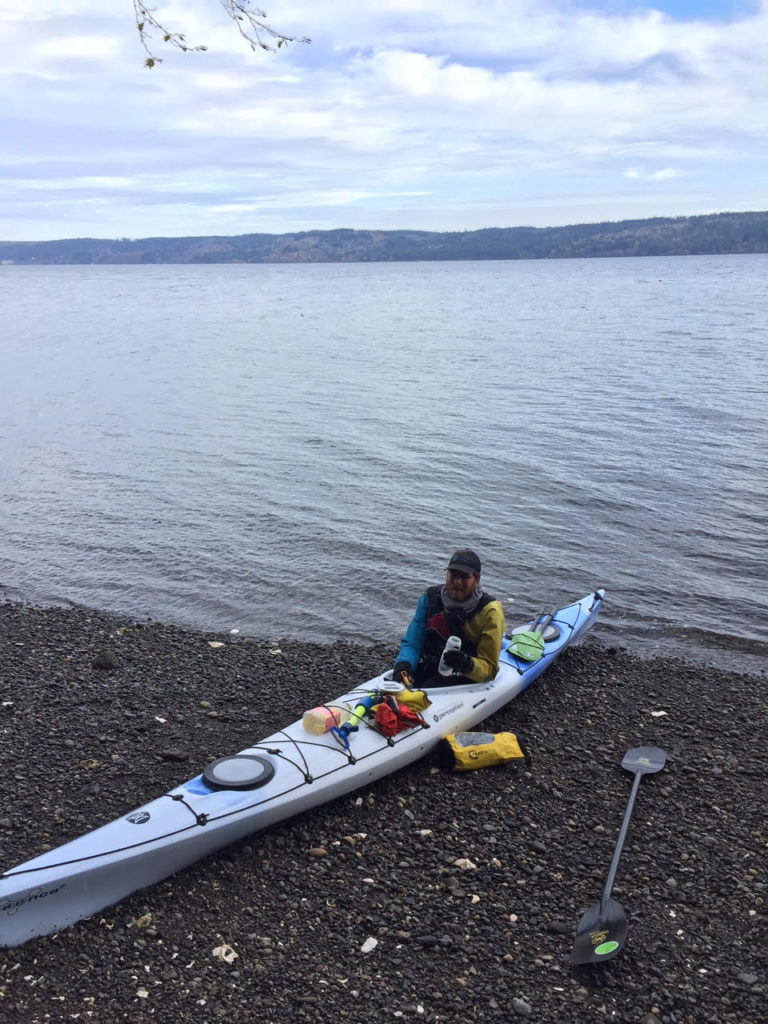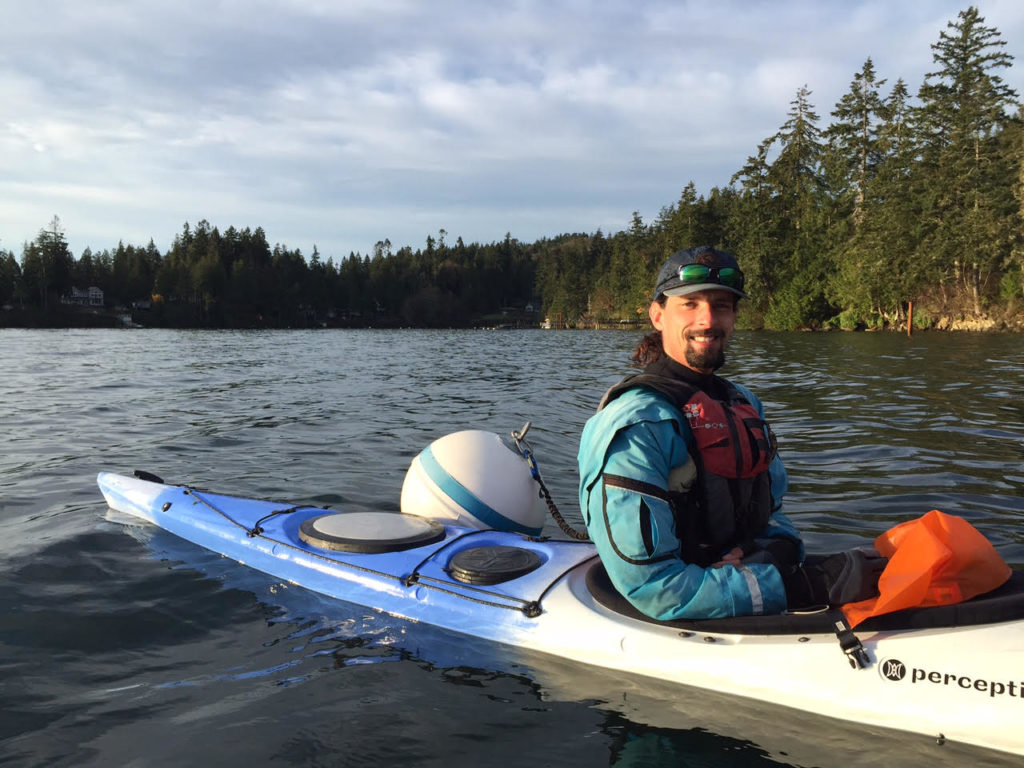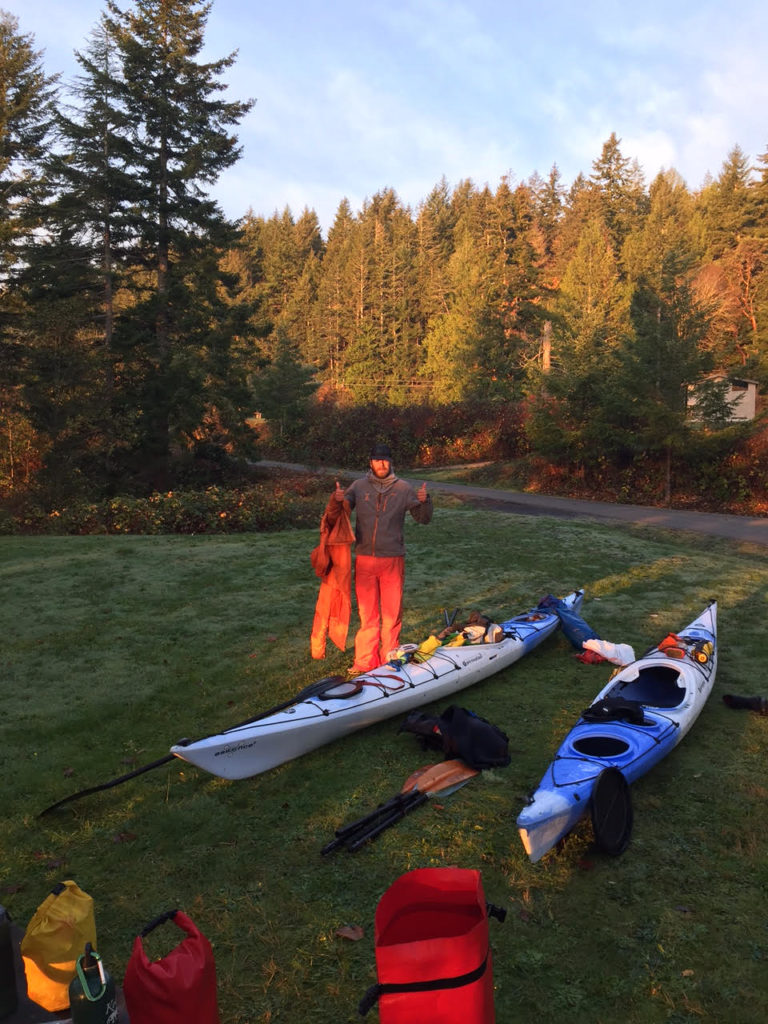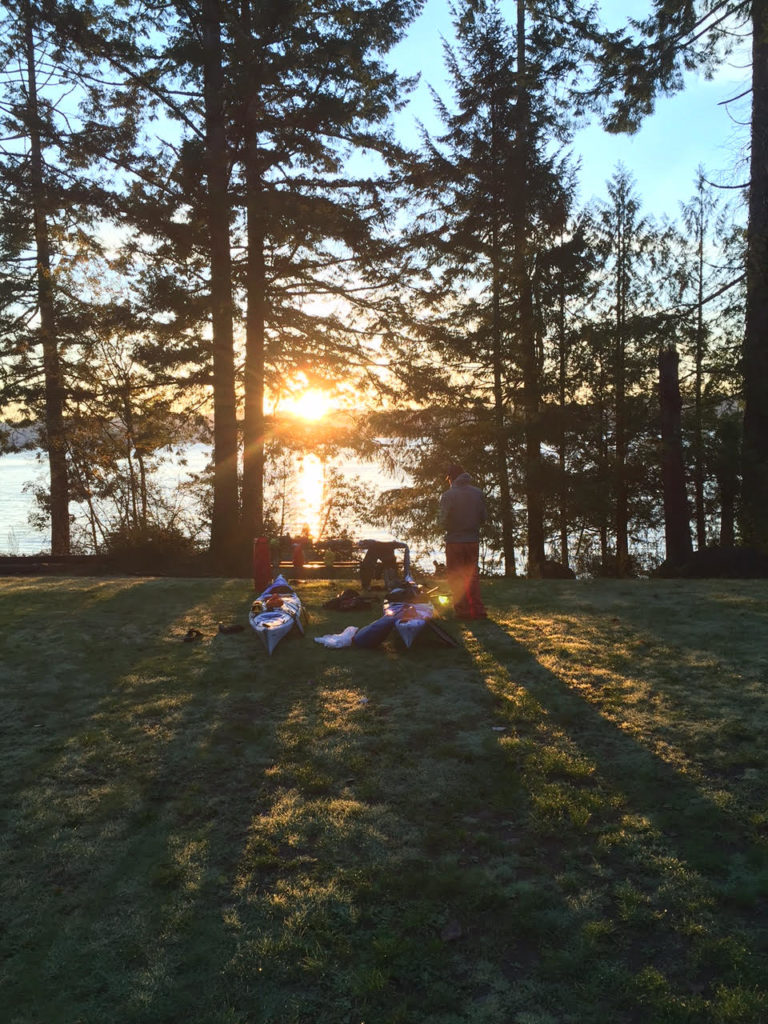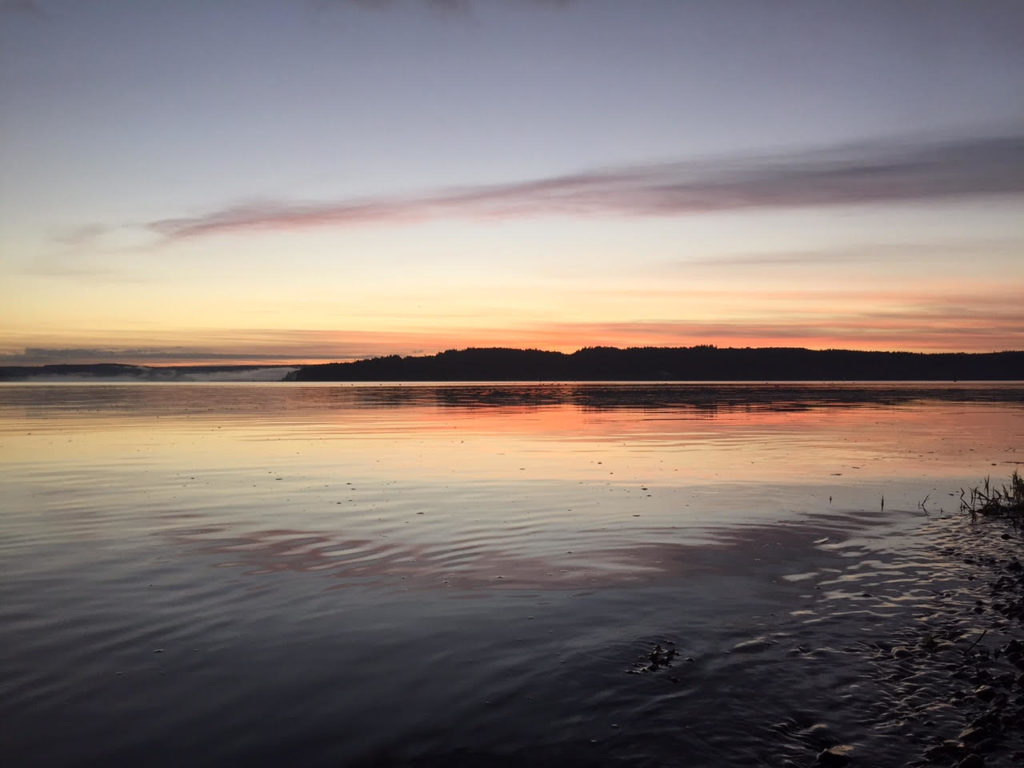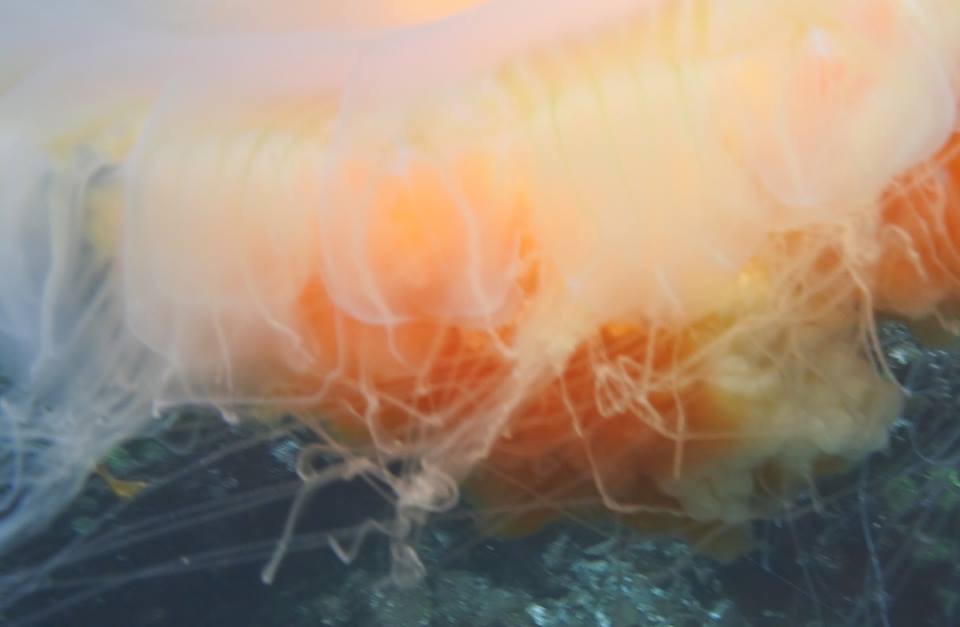
Slime.
You don’t need to go far to find it these day.
If you’ve been around kids, you’ve probably seen them stretching it and rolling into balls — it was one of the most popular DIY toys last year, thanks to the internet
Speaking of the internet, the slime is alive and well there too, but not so innocent. Slime ideologies of racism, anti-intellectualism and fascism, rolled into the textures of our memes, social media and (oh yeah) the federal government which has lately incubated amoebic ideology of toxicity and hard-core selfishness.
Where else can you find slime these days? Tar sands, a poisonous black sludge that oil companies are trying, ceaselessly trying, to move south and west out of Alberta, Canada to the Gulf Coast and to ports along the Salish Sea near where I live.
The Salish Sea, which includes Puget Sound, the Strait of Georgia and the Strait of Juan de Fuca, is another battlefront in the slime invasion, this time the jellyfish and algae that have begun to choke out complex vertebrate lifeforms like salmon and orcas.
Infinitely pliable, slime is passive, non-resistant to external forces. Yet, when there is enough of it, it overwhelms everything. Jellyfish, like fascists, thrive in toxic environments that degrade more sophisticated organisms.
I believe that all these forms of slime are linked together (excepting, probably, the kids’ slime.) Big Oil brings in the money that shapes Trump administration policy and Big Oil brings in the money that fills the war chests of pro-oil members of the US House and Senate. The slimy souls, who prefer dollars over democracy, have demonstrated their willingness to sell land and sea for drilling, to cut away the safeguards that slowed climate change. And now we link to the slimification of the ocean, where jellyfish and other simple organisms choke out other life.
All of these slimeforms are a lot to fight, yet, I believe that those of us with spinal columns have the tools and drive needed to win the battle. We can join others who say “no” to the oil that powers the slime machine. It is also within our ability, as sophisticated, social vertebrates, to create relationships and groups that push the slime back through cooperation. Victory has emerged out of environmentalist and Native American groups’ dogged resistance to major fossil fuel projects here in the Pacific Northwest. Groups like Black Lives Matter and #MeToo have turned individual abuses into a national conversation about justice and equality — a broader challenge to the abusive, bigoted men who remain in seats of power.
The Rise of Slime
Rise of Slime, is the name for a trend noticed by the oceanologist Jeremy Jackson that as the oceans became warmer, polluted and overfished, they are becoming slimier too. Algae is one organism that does just fine in warm, polluted water. It has filled in where coral reefs, which couldn’t survive the changing sea conditions, have died. Here in Clallam County, Washington, you aren’t so likely to see algae in the water. Nonetheless, poisonous algal blooms have closed off mussel gathering two years running. The Washington Department of Health warns shellfish gatherers to expect more of these harmful blooms as the sea continues to warm.
More visible, than the algae are the jellyfish that clot the water throughout the warmer months. Cross jellies and comb jellies bloom numerous enough so that it can be difficult to look down without seeing through one of them.
There have been many occasions while kayaking when I could blindly dip my hand off my boat and be sure to come up with a clear, quivering blob. Whether or not this preponderance I saw is nature’s old way or climate reality, we could argue. Yet people have been seeing jellyfish on the rise the world over and evidence is beginning to point to jellies as a result of of pollution, overfishing and climate change.
Slimy jellyfish, with their simple needs can better withstand toxins than a more complicated organism such as an orca or salmon. The cnidarians may drift passively with the currents, but they are fast to reproduce and grow.
I think about these simple bags of slime, expected to do so well amidst the floating garbage. Then I think about the stunted ways our society communicates with one another now, how a couple hours of wading through internet news and social media will bring me to a similar protoplasmic, directionless feeling. Complex thought requires a diet of complex thought, before we bring our developed ideas into the world through gestation and nurture — not too dissimilar from the way mammalian creatures raise their young. Yet, in the toxic environment, it doesn’t pay to develop your thoughts, but to spew them out fast. Divide, multiply and overwhelm; that’s the viral strategy, the slime strategy.
Complex thought, like complicated, multicellular life is disadvantaged in the polluted environment, likely to be choked out by memes or plastic bags.
Witness the slimers like Sean Hannity, Steve Bannon or message board trolls who have flourished in the tide of toxic bullshit that flowed into the national discourse. At the center of it, quivering orange protoplasm oozing brain effluent out through a Twitter feed.
What about Hillary’s emails? Climate change is not the problem. Bigotry is not the problem. Skyrocketing inequality is not the problem. Fake News. Political correctness is the problem that we’re dealing with. Press conference over. Here’s your tiki torch/deportation papers.
Thinking people retain the wherewithal to see bullshit for what it is. Yet the sheer quantity of it still has the power to overwhelm. If we take the time to address each new outrage, we spread ourselves thin and fall into involuntary myopia. There’s less time to go deep any more; it’s harder to settle down with a book when the news is blowing up yet again.
Paying for gas is paying for Trump
One way that I have tried to push back against the slime tide has been to watch my carbon footprint.
The act of riding a bike to work may not feel as cathartic as blocking a tank (or tanker ship) but for me it is less about riding my bike and more about not turning the ignition. The deep consequences of climate change have emerged out of seemingly trivial decisions such as driving or leaving the lights on.
Every time I fill up my tank, I feed the climate crisis. Compounding that, I know my gas money also feeds the ideological crisis of our time.
The dollar flows from the pump to the oil company, to the political action committee to the vicious petro-Republican agenda that oozes like tar sand over the fabric of our rights. The administration is soaked in fossil fuel — from Tillerson to Zinke to Pruitt. Oil companies may have hesitated to go all in with a racist liar in the general election, but then he won and they realized they were sitting atop a rich vein of opportunity. They pitched in millions for the inauguration; no doubt they are prepared to loosen their purse strings for the 2020 campaign.
A look at the obscene pro-oil, pro coal agenda pushed by the Trump team shows that the companies’ investment in them has been well placed. This year’s horrors included the administration pulling the country out of the Paris climate agreement and a move to declassify Capitol Reef and Bears Ears as National Monuments — to open the land to drilling. Further outrages include Zinke’s proposals to permit offshore drilling rigs in the Atlantic and Pacific.
The money from the Gas n’ Go doesn’t just prop Trump though. Thanks to Citizens United nourishing currents of money from companies like Exxon-Mobile and BP help feed the slime organisms that rule the swamp Congress. Witness the language of the newest tax plan that opens the Arctic National Wildlife Refuge to drilling, saving money for billionaires so they could get the tax break they don’t need. Trump swiftly approved.
At the state level, the American Legislative Exchange Council also leverages Exxon-Mobile and Koch Industries donations to write the proposed legislation that the state senators and reps vote for. It is convenient when companies lean on politicians for results and have a bill conveniently pre-written that reflects their agenda, whether that agenda is about fracking standards or Stand Your Ground laws.
If any of what I have described above outrages you, just remember that we pay the bastards.
We support them every time we drive. The daily commute, visits with friends, a last minute trip out to buy dinner all put money in the pockets of those who have threatened our climate — helped feed the tumor growing on the face of democracy, equality and human decency.
A question of my own culpability
I continue to ask myself how much should I should use Tom’s on The Move to talk about the destruction of life as we know it on our planet. How much should I mention the climate crisis in my writing? Is it fiddling while Rome burns that I might admire dewdrops on the moss, while villainy is afoot?
I think of the balance between nature appreciation and advocacy when I look back on a summer hike that I took with a couple friends who are heavily involved with environmental activism. Naturally, we had made this a gas free trip — having biked from Port Angeles to the trailhead, and then walked up to Lake Angeles at 4,000 feet. The lake was flanked by 2,000-foot cliffs of monumental stone. Even in the height of summer, the shadows held large swaths of snow. Snow gave way to braids of roaring water cascading down down to lake-level.
Throughout our hike, our group had talked about the latest outrages from the administration, dire indications of how climate would worsen drought and fires in the Olympic Mountains. Protests, petitions and letters to the policymakers awaited back down in Port Angeles, and my friend felt guilty about going above it all to admire the scenery.
Though I admired the commitment, it seemed wrong to me that someone who worked so hard to protect nature would doubt himself because he was taking time to enjoy it. I came up with Edward Abbey, who wrote in Desert Solitaire, “Where there is no joy, there can be no courage, and without courage all other virtues are useless.”
It is unthinkable for me to cut myself off from nature, which has been one of the greatest joys of my life. Yet the natural world remains under dire threat. I fear I may let my love of nature become a narcissistic relationship. If it enriches my life, shouldn’t I do something in return?
I wish I could say that I felt like a member of good standing with this relationship to the natural world, but I feel more and more like a freeloader who needs to do more.
It’s not that I don’t try. I have taken a few steps that most people around me have not, including adopting a vegan diet, buying the majority of my food in bulk so I can use reusable containers and driving my car with extreme parsimony. I use my bike for commuting, grocery runs and most other errands.
I cut down on the amount of produce I had to buy from out of state by making stir fries from stinging nettles I harvested, also going several months where the only fruit I ate was the berries, apples and pears I’d picked around Port Angeles.
The doorstep adventure remains my favorite way to travel. I consider it important that I have spent the past summer traveling throughout the Olympic Peninsula on bike and foot. It is my way of saying that I will not make an exception, even for doing the adventures that I love, that I would rather stay close and push myself near home, than fly out to some exotic locale, on the wings of a carbon blasting machine.
A cross country plane trip to visit family back home was my biggest carbon expenditure of 2017, and for all my other efforts, it likely tilted the scales beyond what would be sustainable for one person over one year.
Even if I disregarded that trip, my (mostly) grounded vegetable existence would still feel inadequate to address the task at hand.
Do vs. Don’t
Why inadequate? Inadequate because the bulk of my actions have seemed to start with “I don’t,” as in “I don’t eat meat” or “I don’t drive my car to work.” I began thinking that if I wanted to have a meaningful place in the world, I needed to have some “I do” statements about myself as well.
Naomi Klein, the environmental activist and author, puts words to the feeling in her book No is Not Enough, which came out a couple months after Trump’s inauguration. Klein argues that if the opposition can only say no to things that Trump does, they will fail. There needs to be an alternate vision that they can say yes to. This vision would be a progressive agenda that stands up for human rights, corporate responsibility and sustainable energy.
The agenda Klein believes in resonates with me, but I want to say yes with actions as well as words.
Over the past year, I have tried to use actions to build my commitment to the environment. I haven’t done anything spectacular, just little steps that include volunteering time at some restoration sites, going out to help monitor stream quality around Port Angeles every month and spending time working with Olympic Climate Action. The later has included helping at a fundraiser against the Trans Mountain Pipeline, work compiling a weekly list of news stories for members, and speaking out at a county hearing about the need for shoreline zoning to represent climate change reality. These small actions have made me aware of those who do so much more.
Take Michael Foster, one of a group of five “valve turners” who broke into pipeline substations near the U.S. Canadian border and shut down 15 percent of the oil imports entering the United States in one day. Foster could now face more than two decades in prison for his actions. His sentencing is in North Dakota, the state where he shut the wheel on the Keystone 1 pipe and cut off the tar sands crude it was bringing into the U.S..
Not a compromising kind of guy, Foster. In a Seattle Met interview, he tells the reporter that fellow activists who fly in planes to vacation overseas are “actively destroying the planet — for fun.” He is also one of the kayaktavists who have blocked oil tankers and drilling platforms on the sea using sea kayaks as buffers.
When I saw Foster speak in Port Angeles, it was regarding the Trans Mountain pipeline proposal, a line that would haul more tar sands oil than even the Keystone XL project would and increase oil ship traffic by 700 percent on the Strait of Juan de Fuca between the U.S. and Canada. The sheer audacity of this project, the scale and money that would be involved was staggering to consider. Foster, the former mental health practitioner, had a message for our group: he may have seemed crazy that he was willing to trade away his freedom in order to turn a valve, but it was even crazier to believe that half-measures would save us from the climate crisis.
Coming together
Native groups have been another dogged and inspiring resistance to the fossil fuel industry. Tribes throughout North America have forced corporations to backpedal projects and the government to respect the old treaties giving them rights to fishing and healthy lands. The fronts are too numerous to name, but include a stunning 2016 court victory where the Lummi Tribe used treaty rights to win against what would have been the largest coal shipping terminal in the United States at Cherry Point, Washington. Tribes in Washington and British Columbia are united against the Trans Mountain pipeline proposed by the Kinder Morgan Corporation. The Puyallup tribe continues to push back with lawsuits and protests against a proposed natural gas terminal alongside their reservation land at the Port of Tacoma.
Like Foster, citizens in these groups have been willing to face arrest for what they believe in. They, who stand witness to generations of exploitation, know the stakes.
Those who toed the line at the Dakota Access Pipeline protests in North Dakota are coming back to fight projects in their homelands. I have heard the Lakota phrase “Mni Wiconi,” — “water is life” — here in Washington, where it applies to the life within the Salish Sea just as aptly as it would apply to the Missouri River in North Dakota.
The theme of common struggle is not just geographic, however. It reflects the burden climate change puts on people across all walks of life — though the burden is shouldered disproportionally by the poor, the marginalized and the disenfranchised. Environmentalism is entering a coming of age moment where the public image of the movement is far more than just a group of concerned white guys like me.
Tribes that fight oil pipes also fight centuries of racist treatment and a prevailing attitude that their existence doesn’t matter. History shows them they cannot expect benevolence from those in power.
Every place where there is a fight to protect the environment, there is also a fight for human rights and dignity.
See the superfund sites, flush with oil refinery toxins, that flooded out when Hurricane Harvey slammed Houston, Most of the sites were put around working class black or Hispanic neighborhoods.
Another jarring image from 2017 — the President of the United States free throwing paper towels at a crowd of Puerto Rican hurricane victims. The moment demanded a leader who would acknowledge the need to do more to halt climate change, a leader who would see the need for massive and uninhibited aid to fellow Americans who happened speak Spanish and be majority Hispanic.
Instead, the supposed leader of the free world gave the Puerto Ricans a golf trophy dedication that they could share with the Texas and Florida hurricane victims.
Lack of empathy for these groups, the victims of climate change from flooded Bangladesh to the melting native Alaskan village to the strip mined Appalachian community, fits into what Klein would describes as a “sacrifice zone” mentality, an attitude where whole communities, entire regions, can be seen as necessary losses for the sake of business.
The ugly concept of the sacrifice zone is a product of the same mindset that accepts civilian deaths from an indiscriminate bombing, a mindset that not only accepts grotesque disparity between haves and have nots, but demands walls to keep the have-nots out.
Sacrifice zones have a way of creeping through anyway. One day you may be grateful to be inside the border with the sacrifice zone out of view; the next day, the pipeline is coming through your land, the storm has come for your city. That’s when you realize that your best hope isn’t setting yourself apart but stepping up,making connections. Now that you need someone else to have your back, you can ask yourself: Did you have theirs when it counted?
The idea of strength through unity runs through the “Join or Die” motto of the American Revolution, up through the Pull Together movement among Northwest tribes fighting the Trans Mountain Pipeline. More outreach equals more support from those who will sign your petition, or else put their bodies on the line with you.
Thus, the wise environmentalists know that their fight is with groups like Black Lives Matter, for gay rights groups, anti-poverty activists, those who speak for immigrants and refugees and the burgeoning #MeToo movement — all of whom are working to prevent people from being treated like disposable sacrifice zones.
The power of diversity is confirmed by study of nature: the most beautiful, complex systems exist with diverse actors fulfilling different roles. A healthy forest has a range of trees and shrubs, worms, bugs, helpful fungi nourishing the roots.
Organisms themselves are built on the harmonious relationships between types of life systems. This is true, even for simpler, slimier organisms like jellyfish. They are not altogether simple, boasting nerve nets, tentacles for feeding, tentacles for stinging, innumerable stinging nematocysts. Jellies may bloom into thousands, yet still drift with the currents — with little control or care regarding the agenda.
Far more complicated, far more threatened, we have the Chinook salmon that delivers nutrients from the sea through the rivers, back into the shadow of the northwest forest where it was born to propagate itself anew. Its brain allows it to follow the cues it needs to navigate back to its birthplace, its muscles allow it to thrash up currents that would splat a jellyfish to the wall.
The strength is reinforced by an agglomeration of differentiated tissue below the dorsal fin. Nerve and bone comes together to give the fish that feature that gives it membership in our shared phylum: chordata. The current goes one way, but the salmon has the power to resist (just like we do) — because of its spine.
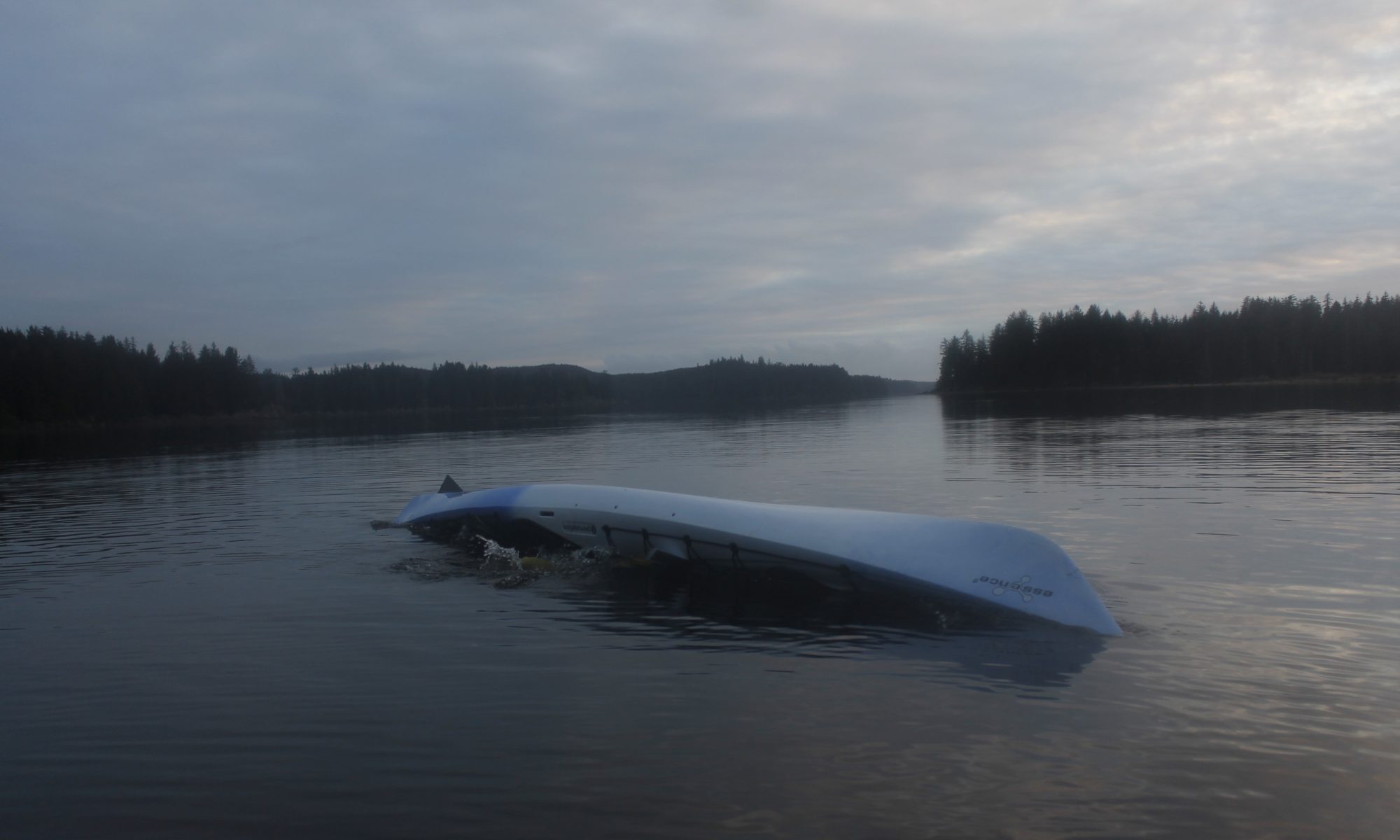
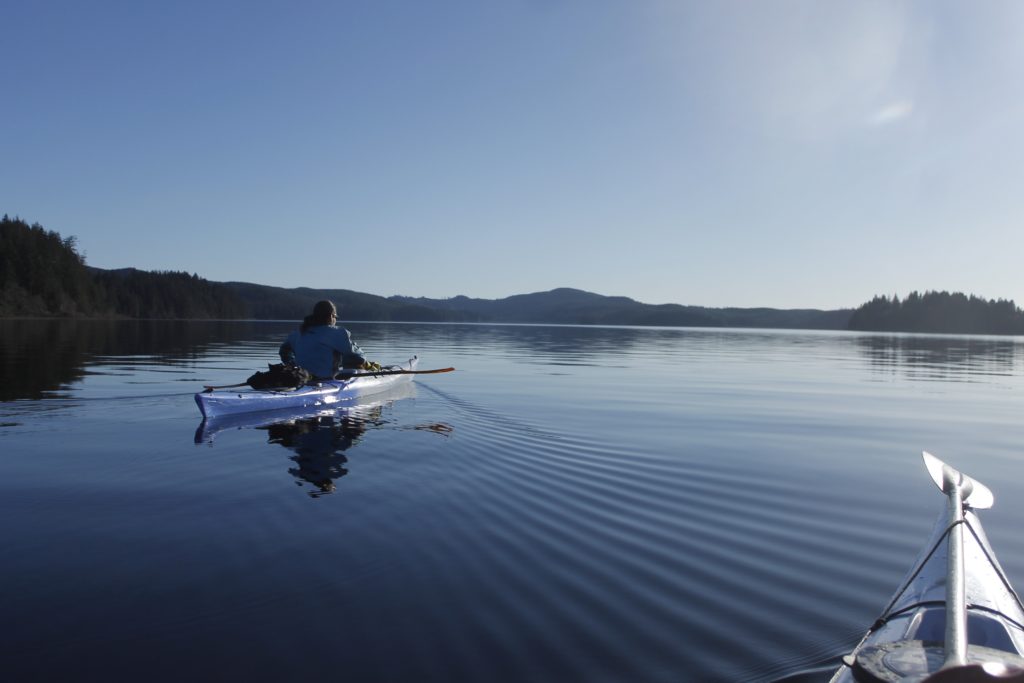

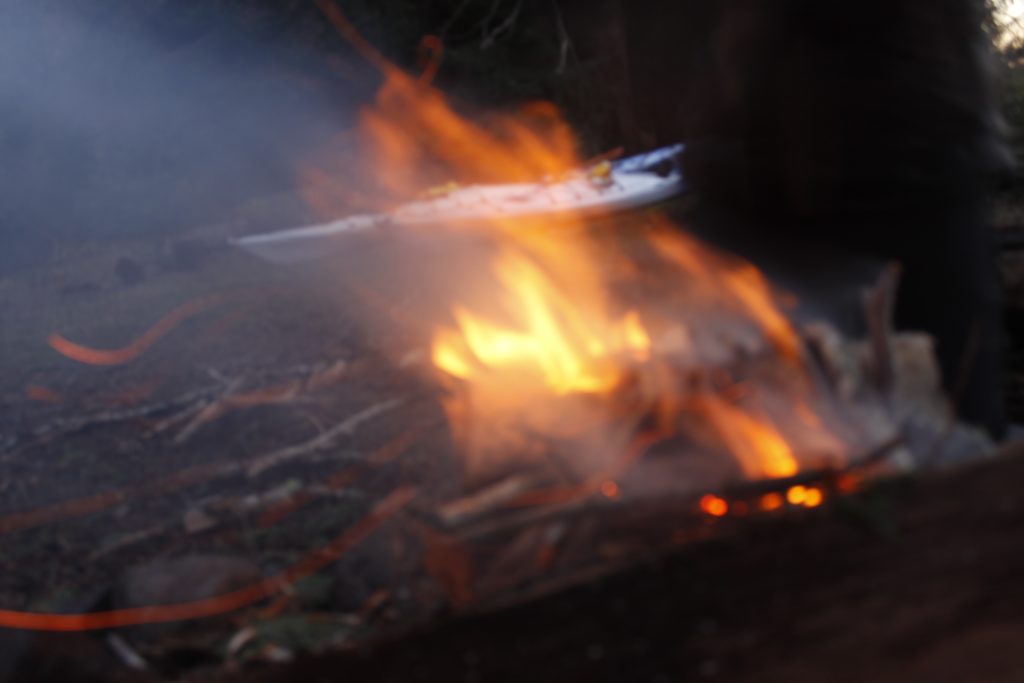
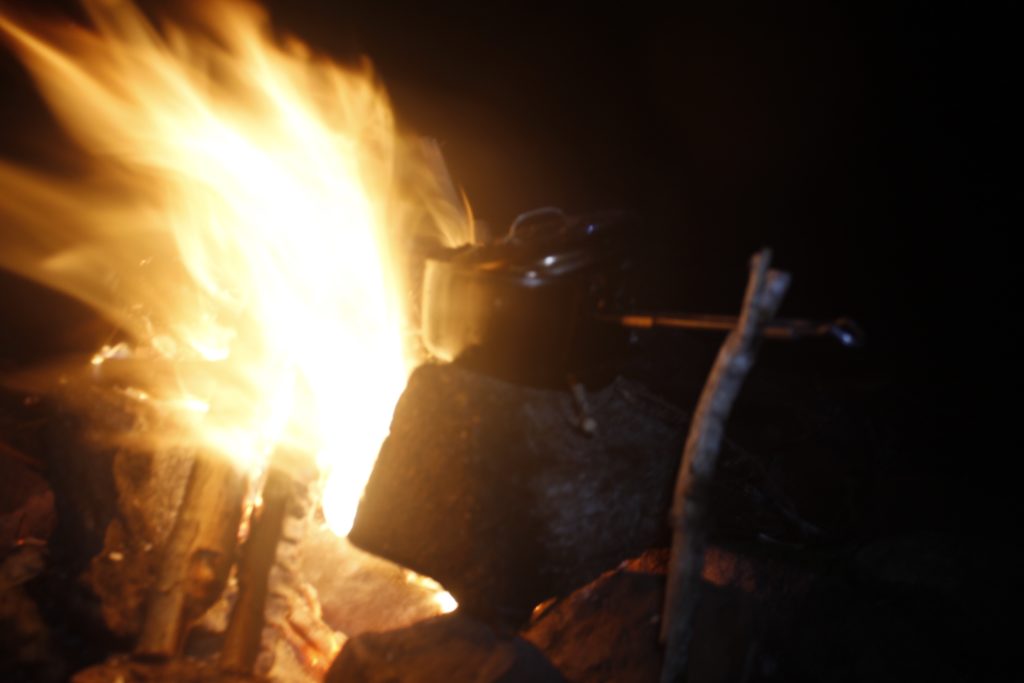
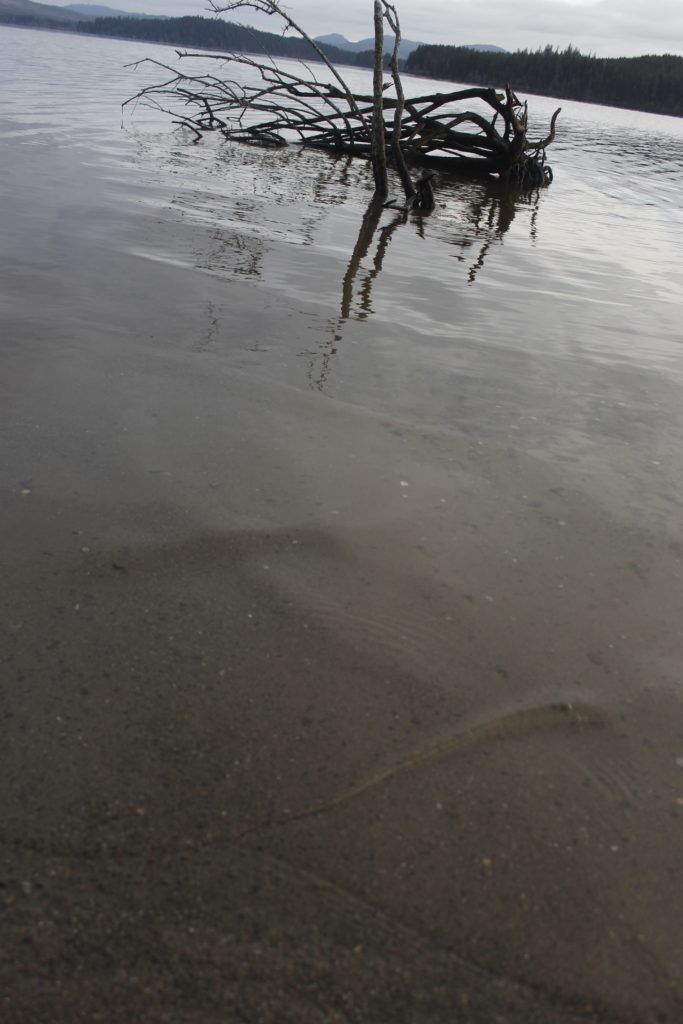
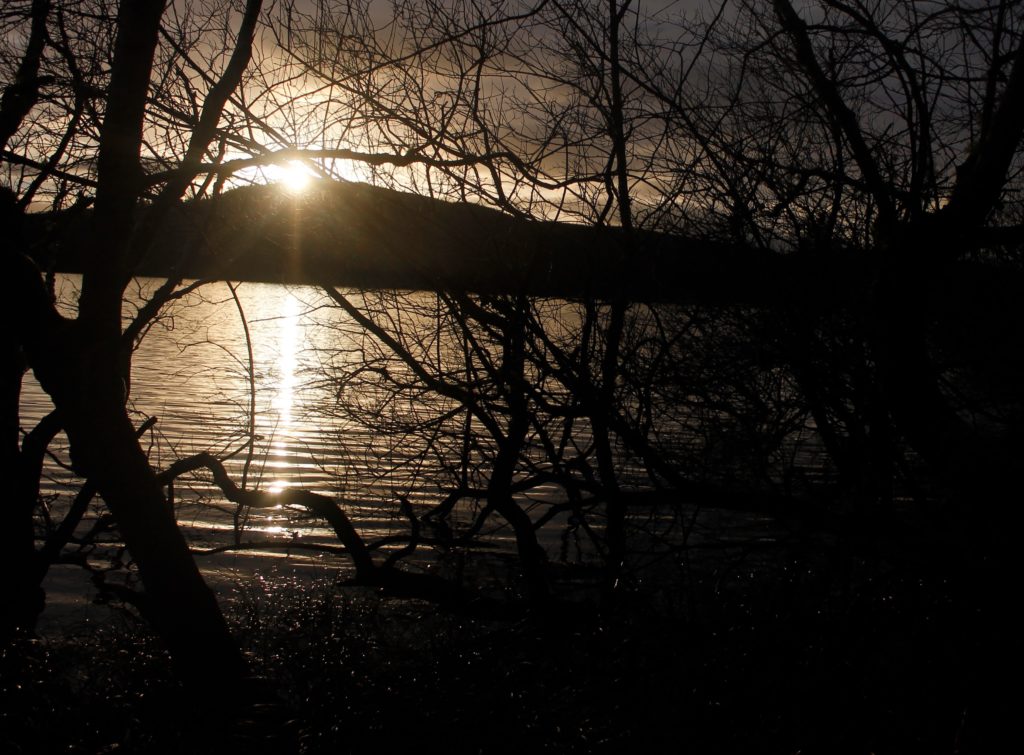
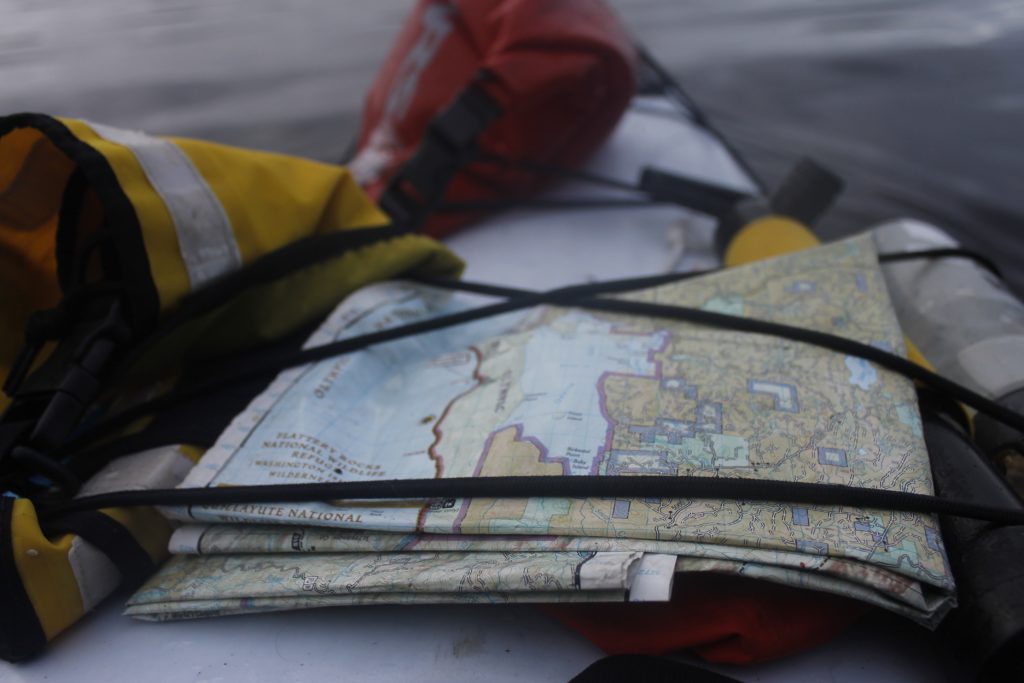
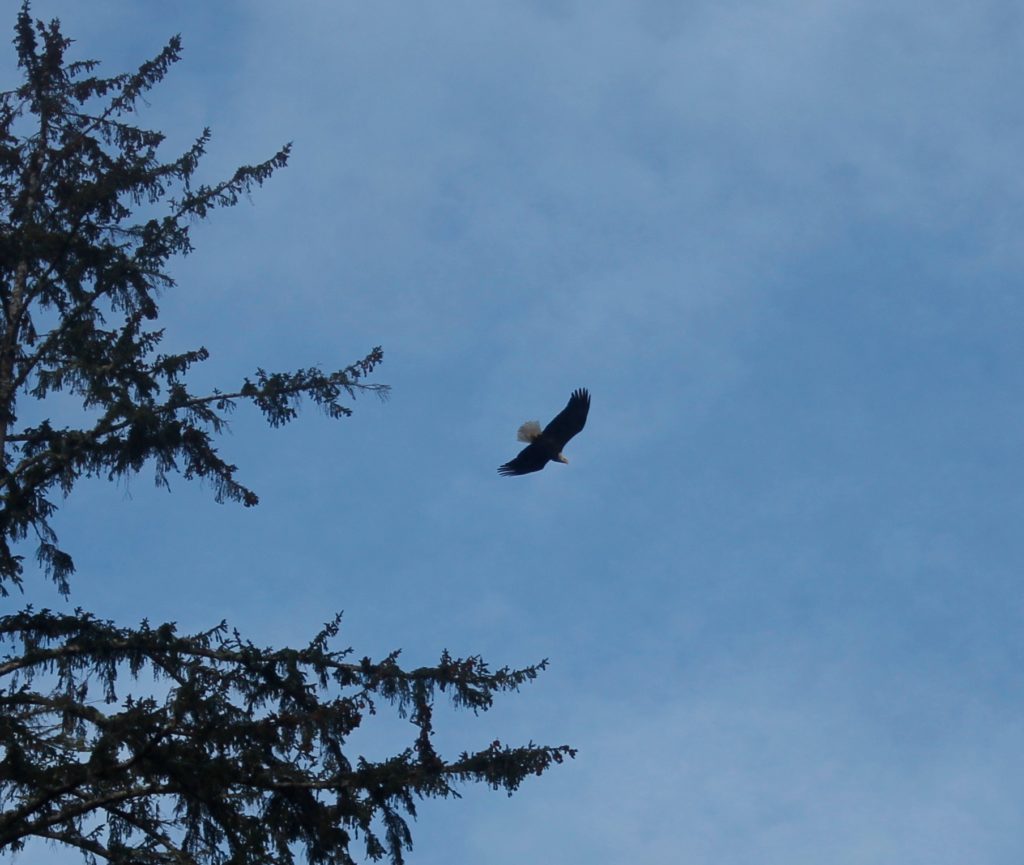

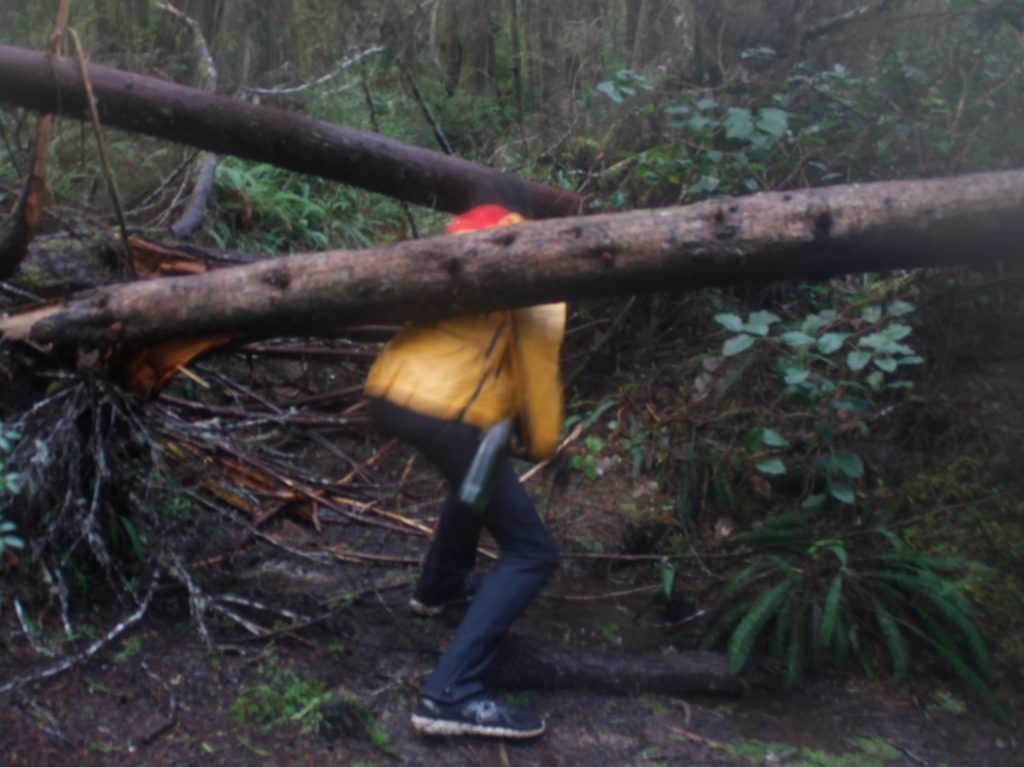


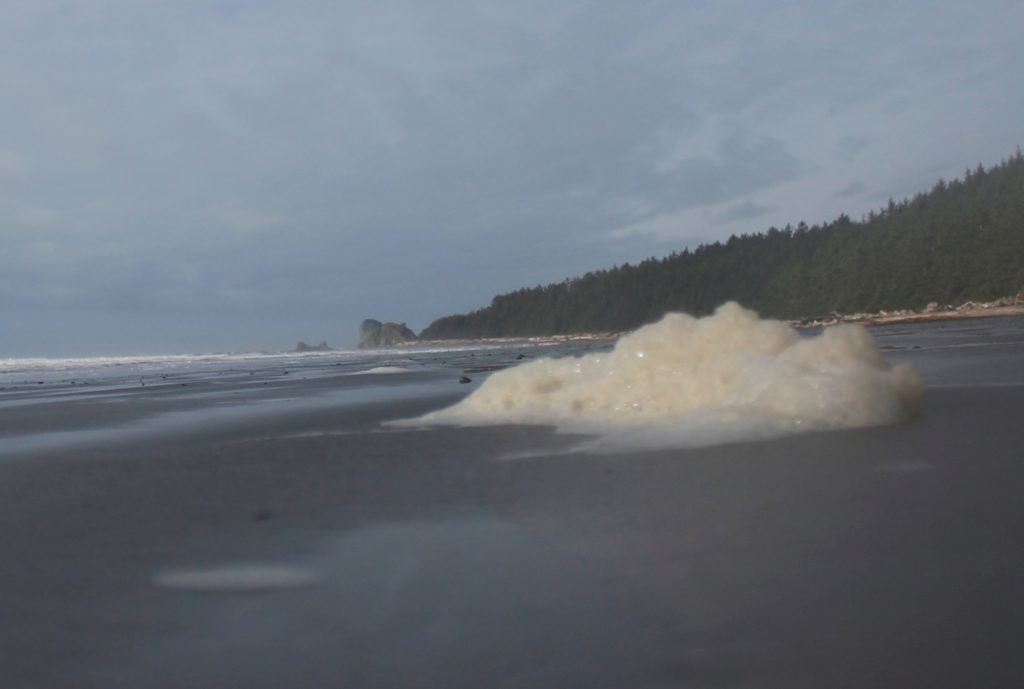
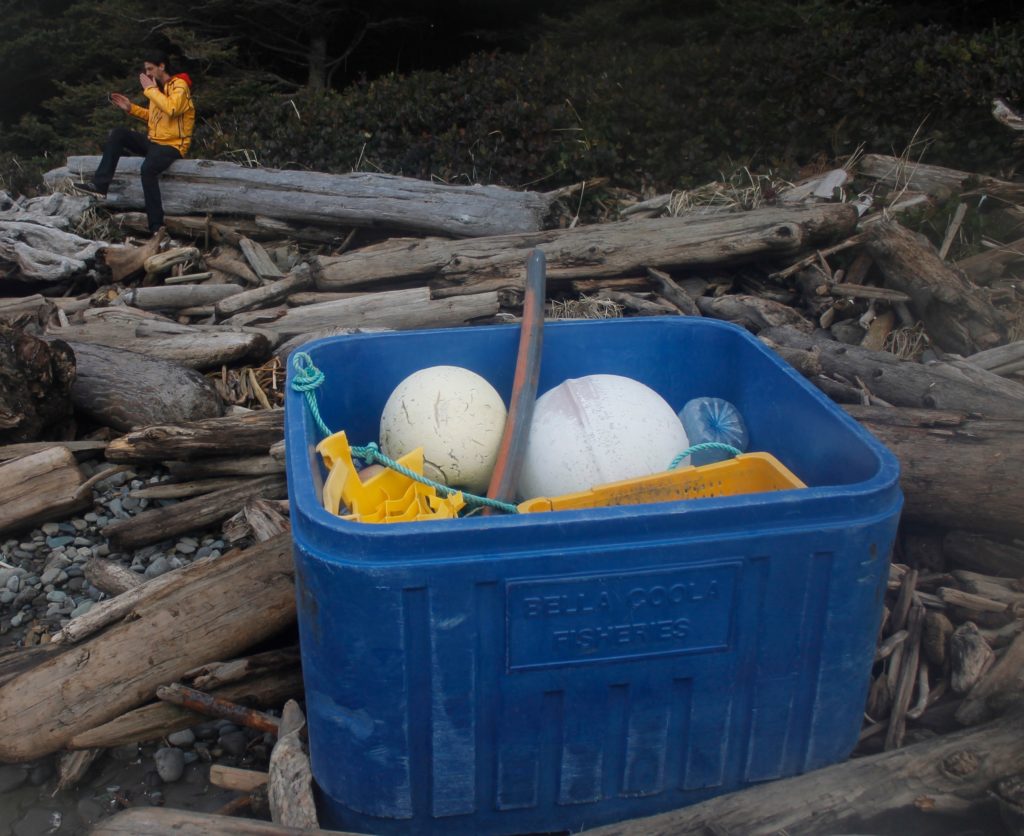
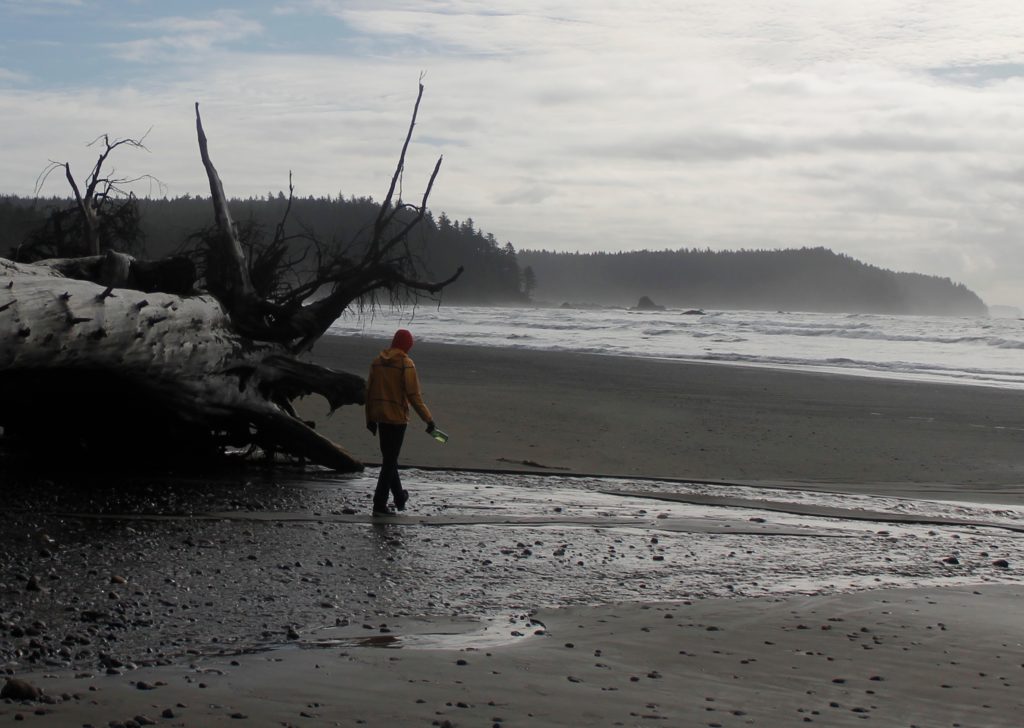
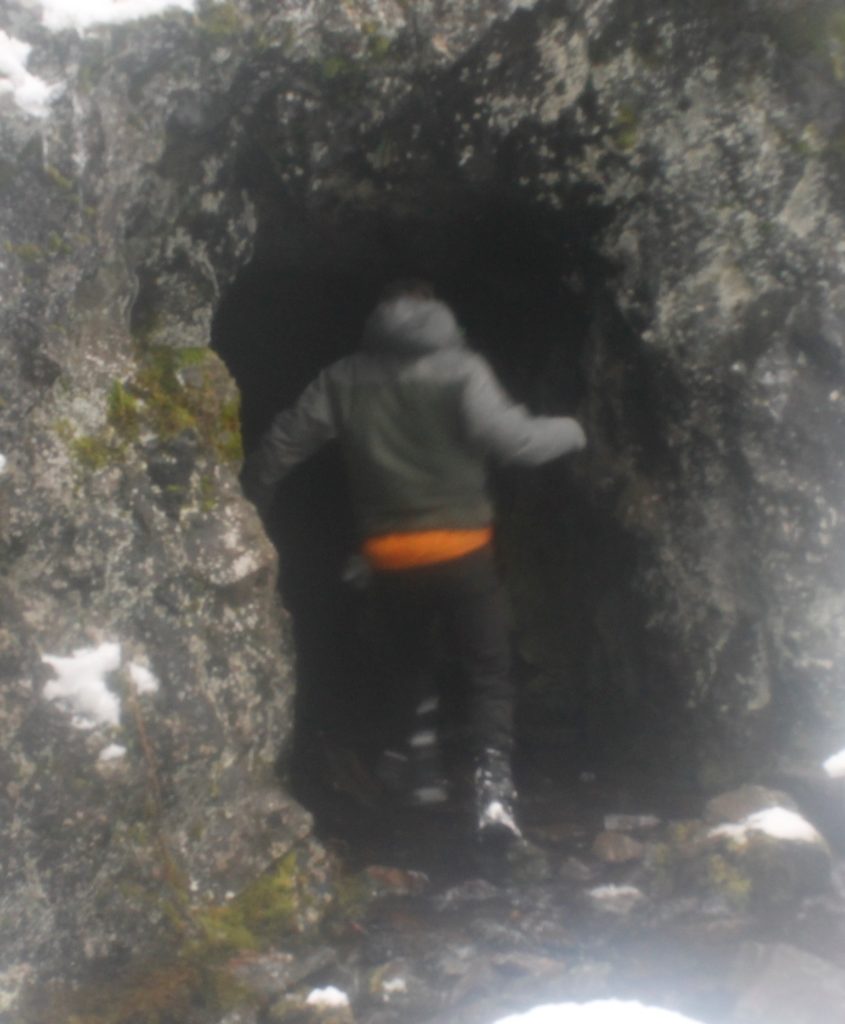
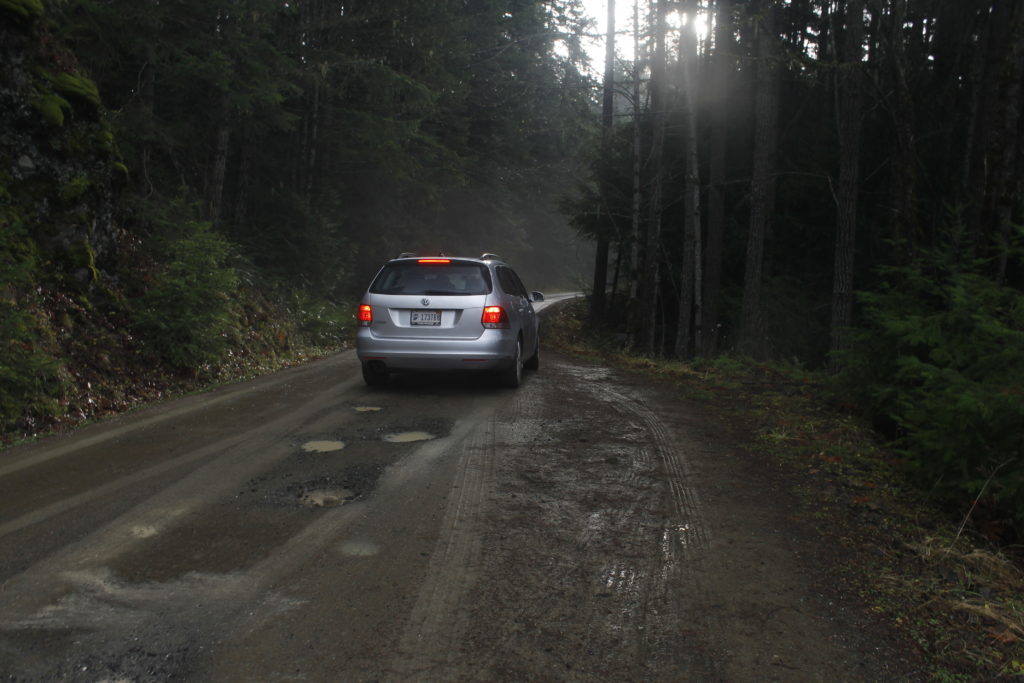
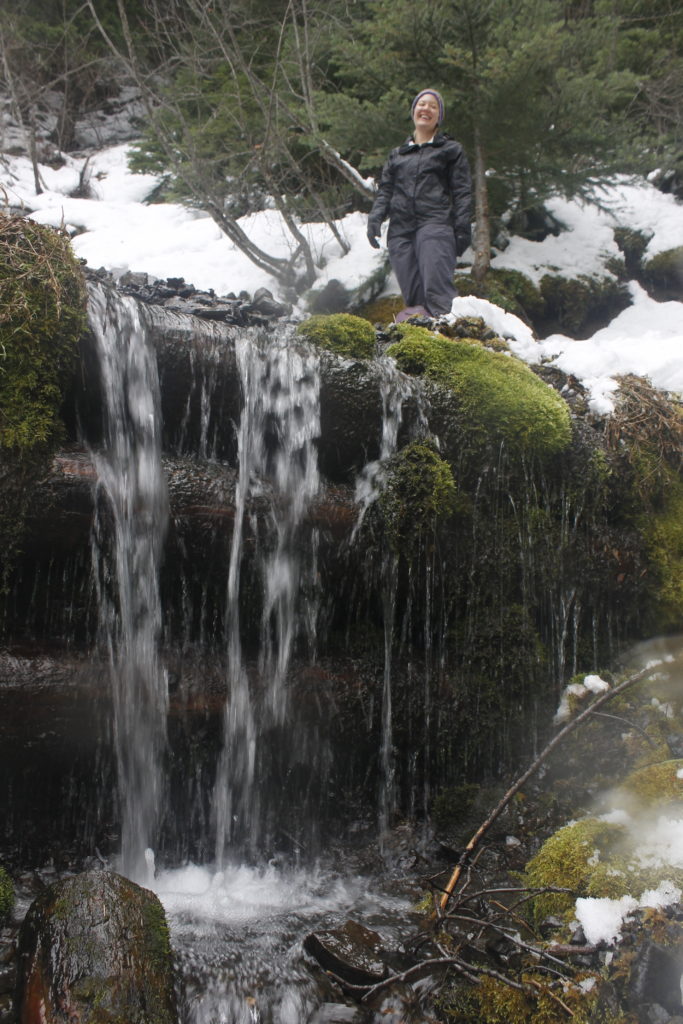
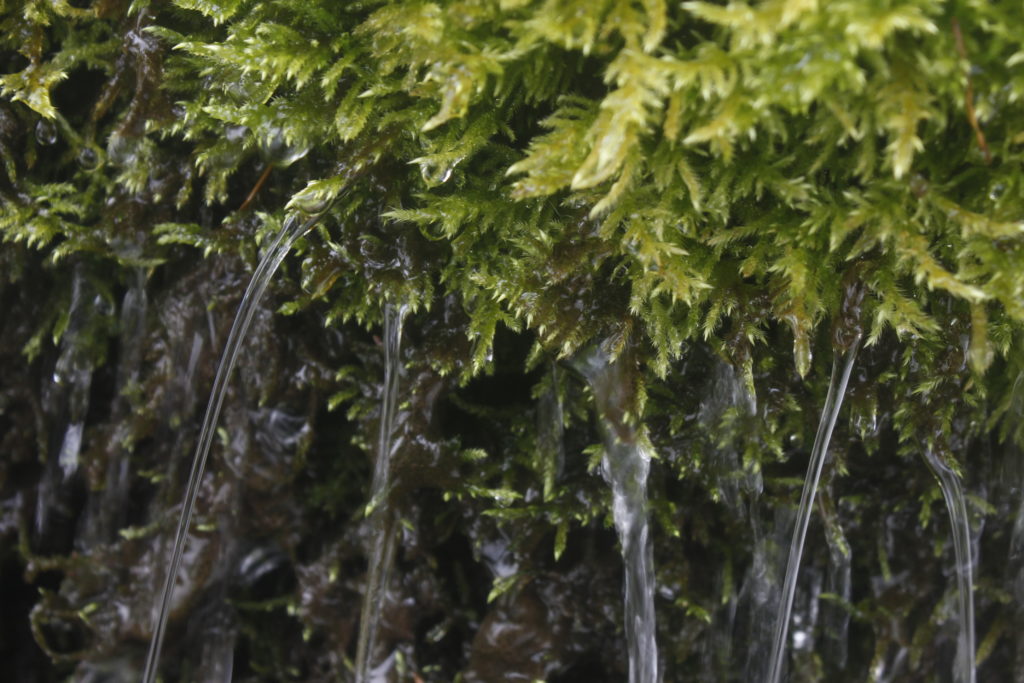 Moss closeup
Moss closeup 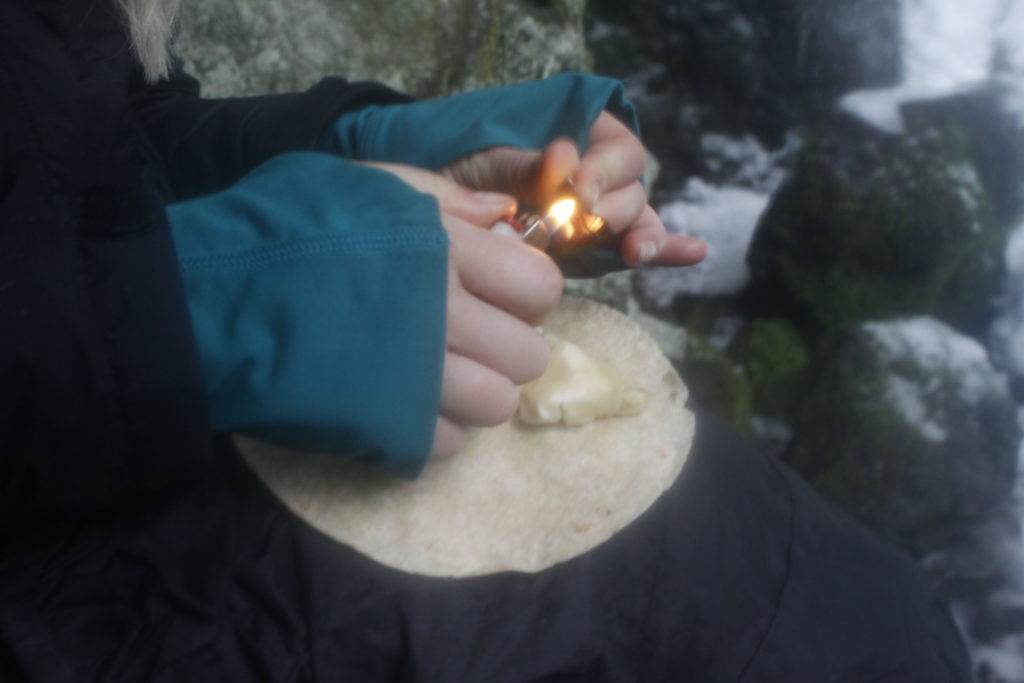
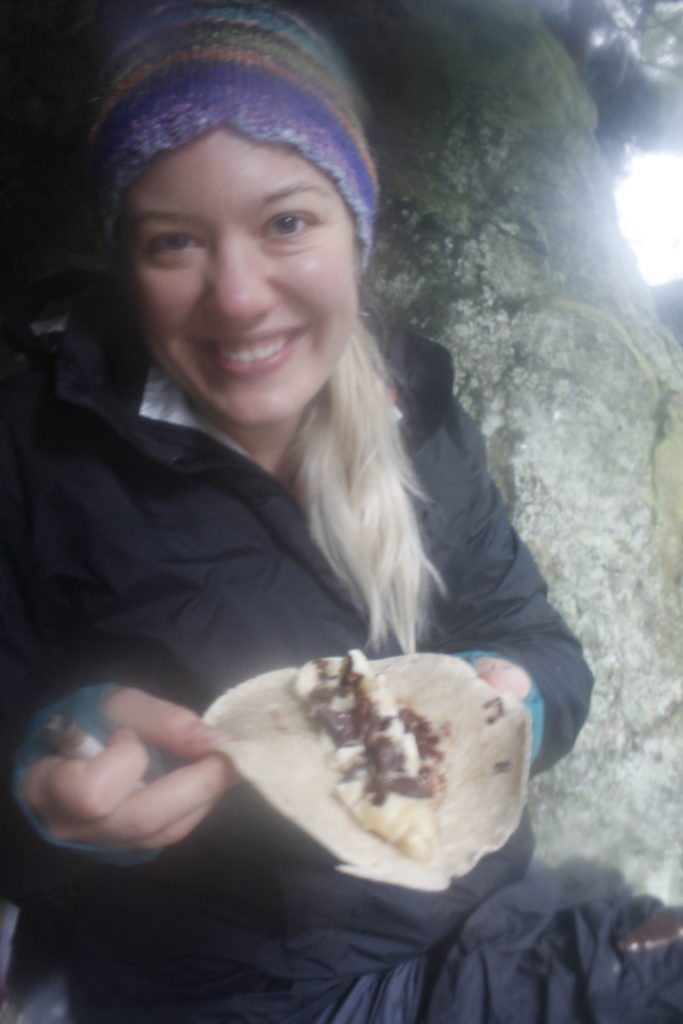
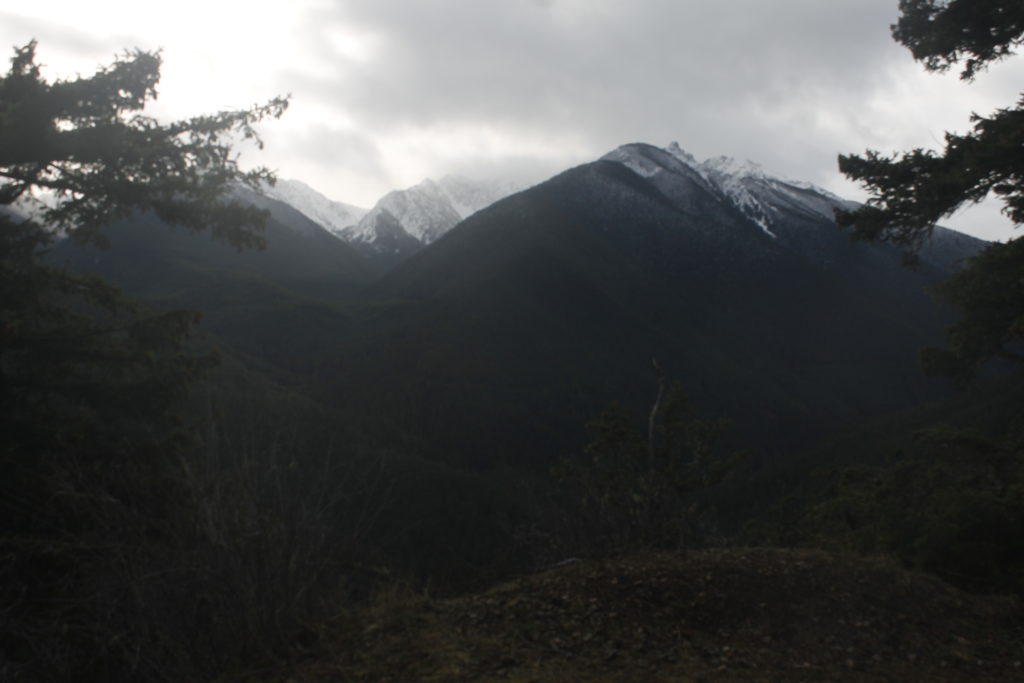
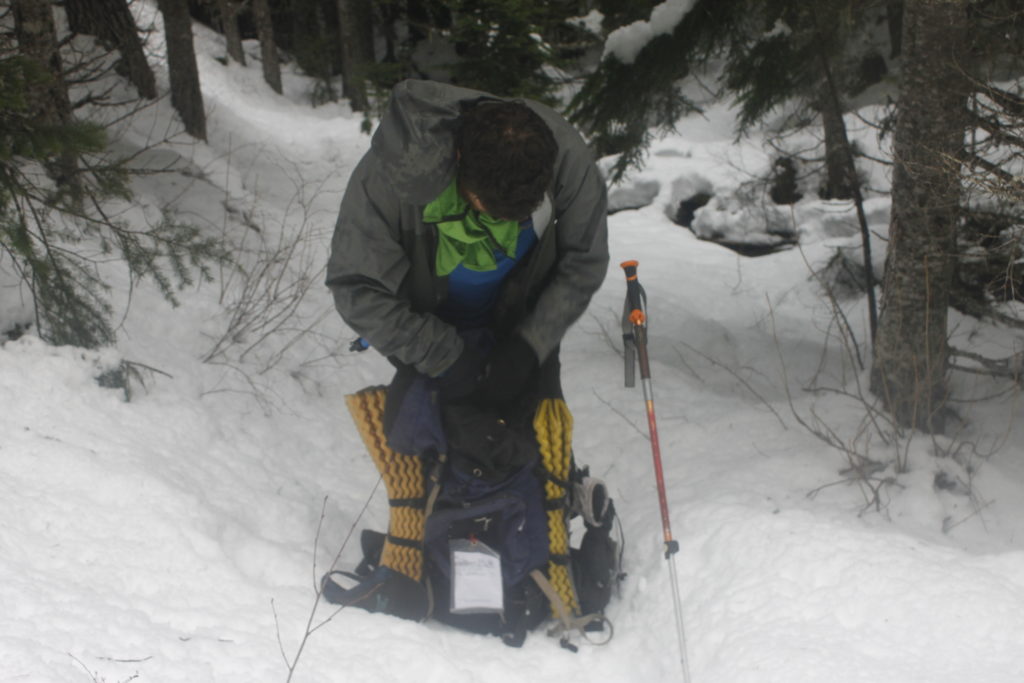 The author takes a moment to mess with his pack
The author takes a moment to mess with his pack


